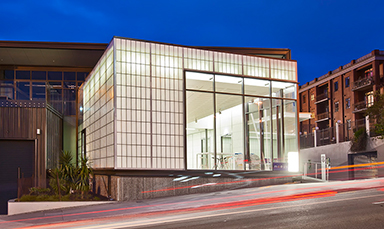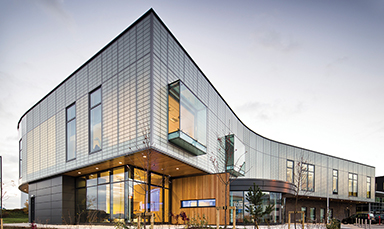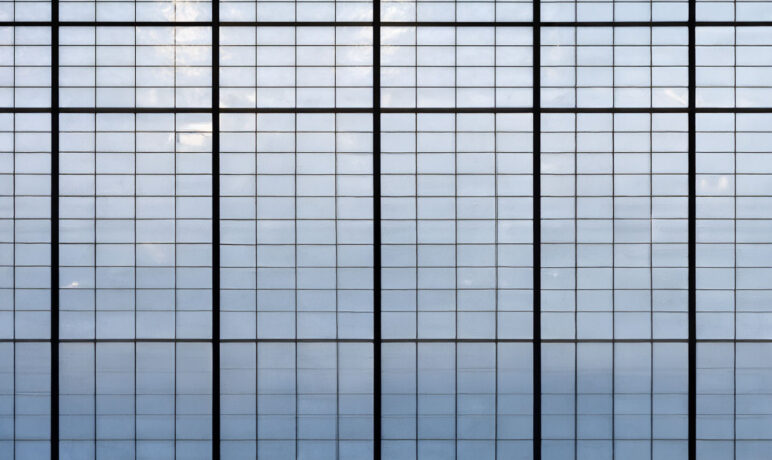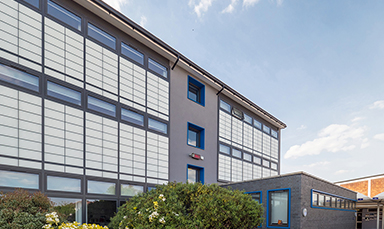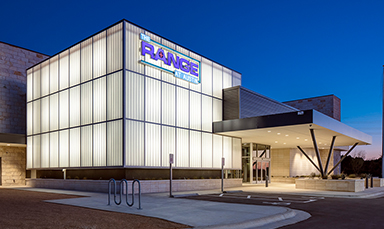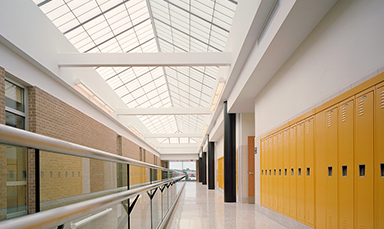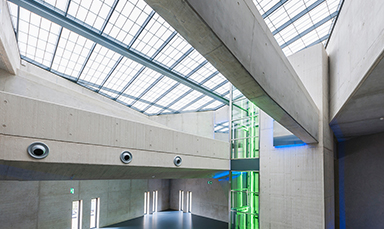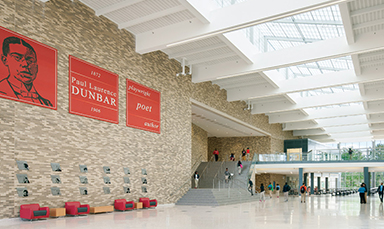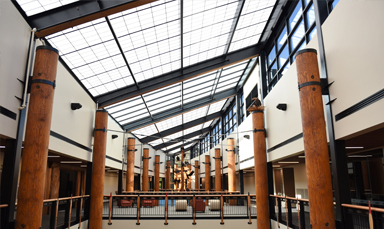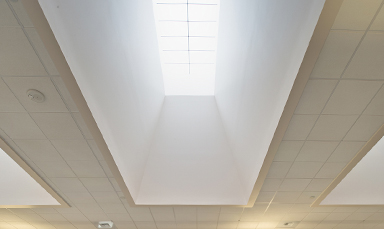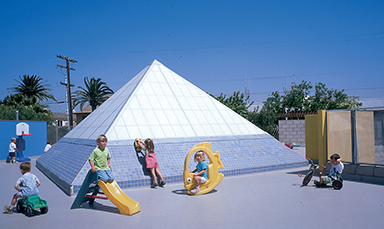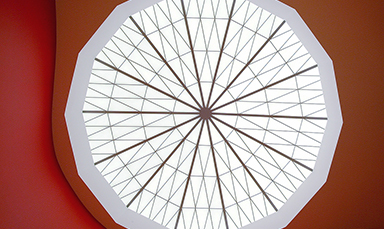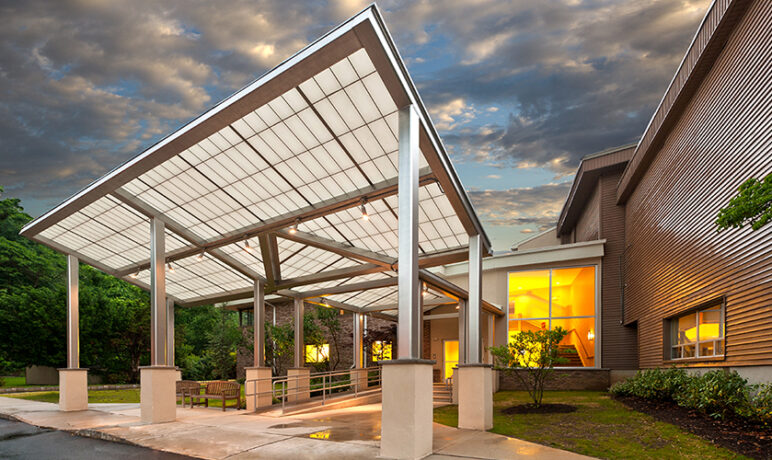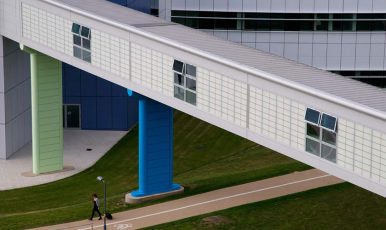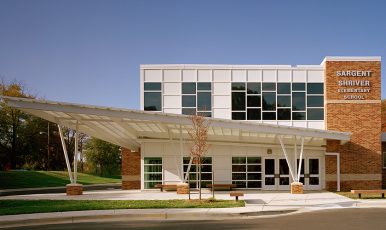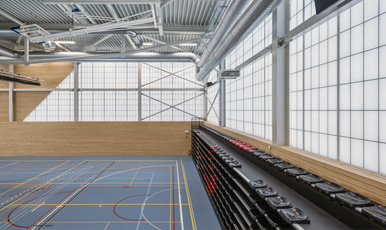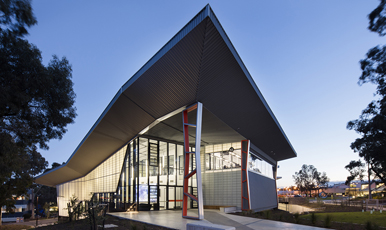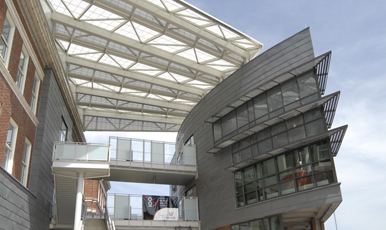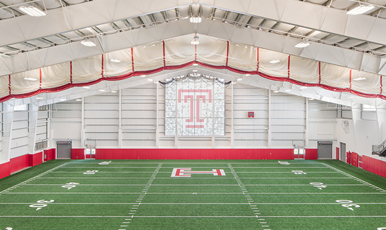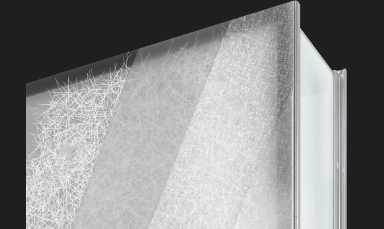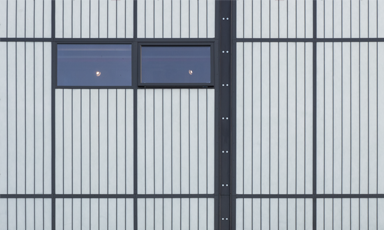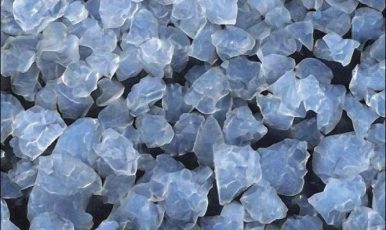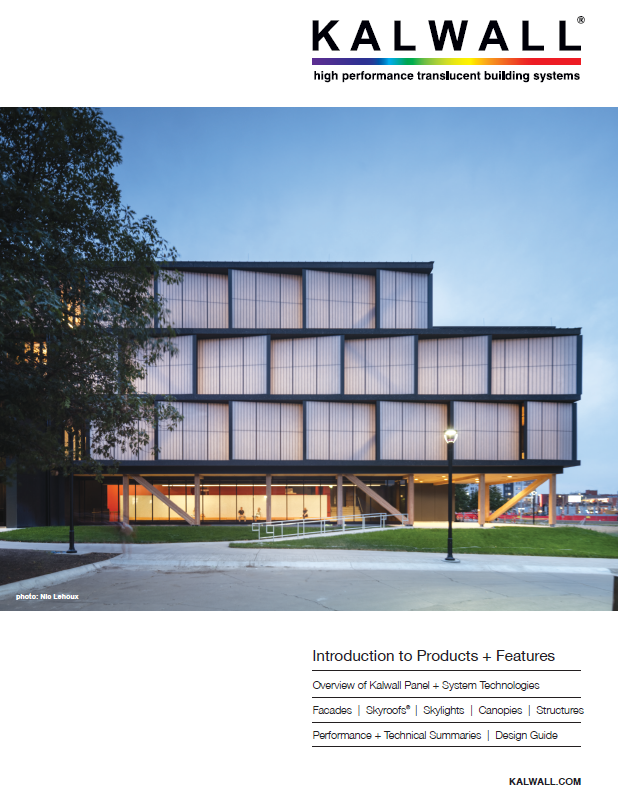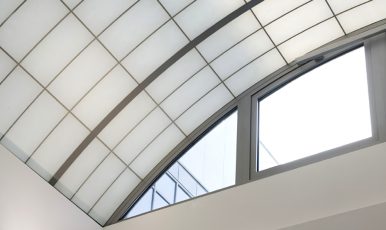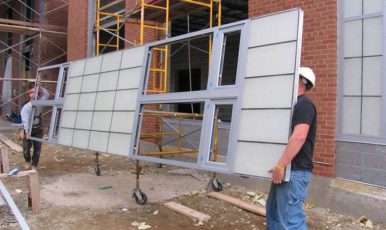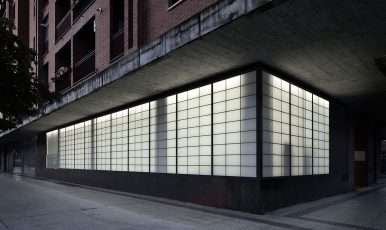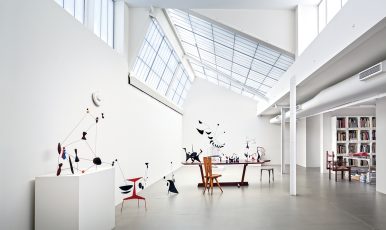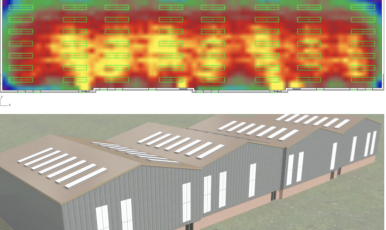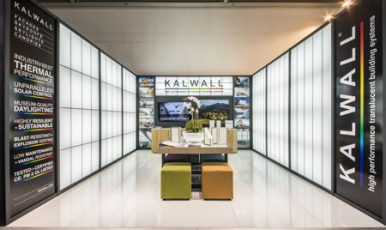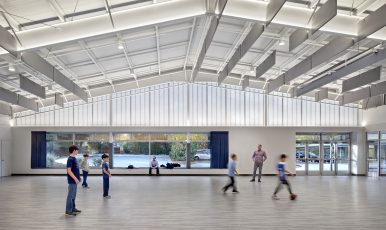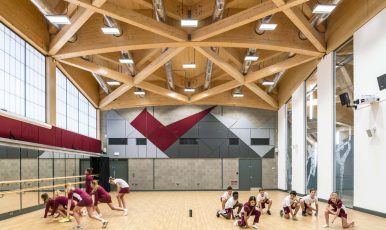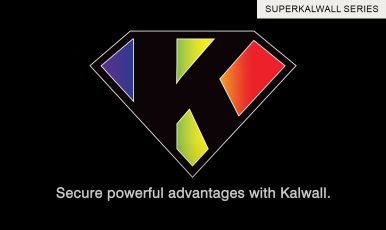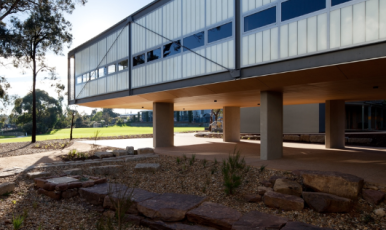Build Translucent: The Benefits of Translucent Facades
Building materials often fall into two main categories: the transparent windows you can see through and the opaque walls you can’t. Translucent materials lie in the no-man’s land somewhere between the two—hard to categorize, often overlooked, but offering benefits from both sides.
Have you ever really considered what you can do with a translucent facade? If not, now is the time to start rethinking the way you build.
What are translucent materials?
It’s all about light. While opaque walls let no light through and transparent windows let nearly all light through, translucent materials only let some light through.
There are three main types of translucent facade materials:
- Polycarbonate (Thermoplastics): Polycarbonate plastics are naturally transparent, but for many facade applications, color is added to achieve the ideal look and translucency. As a thermoplastic, polycarbonate becomes liquid at its melting point, which can cause problems with meeting building fire codes. As an alternative to glass, however, polycarbonate is lighter, impact-resistant and can reduce glare when translucent. In terms of thermal performance, polycarbonate can achieve better performance than glass, but still not as good as a solid wall.
- Fritted Glass: Fritted glass takes the standard window material and tries to fix some of the problems. Glass is printed with an opaque ceramic coating that creates a variety of designs. The frit helps reduce glare from the glass as well as solar heat gain, but the facade is still relying on whatever limited thermal insulation the glass inherently provides.
- Fiberglass-Reinforced Polymer (FRP): FRP, as its name implies, is a composite material combining plastic and glass. Composite materials are important innovations that are stronger than the sum of their parts. FRP is translucent and diffuses light for a balanced environment without glare. Like polycarbonate, it is lighter and stronger than glass, but FRP is a thermoset material vs. thermoplastic, so it does not melt.
Let’s dive deeper into Kalwall’s FRP panels.
Unlike transparent glass, the prismatic fibers in Kalwall’s FRP panels refract and scatter visible light waves in perfect Lambertian diffusion, meaning that light penetrates much deeper and more evenly into interiors. While you might transmit lower percentages of visible light with a translucent facade, it is ultimately more usable, glare-free light. But quality daylighting is just the beginning of this FRP solution.
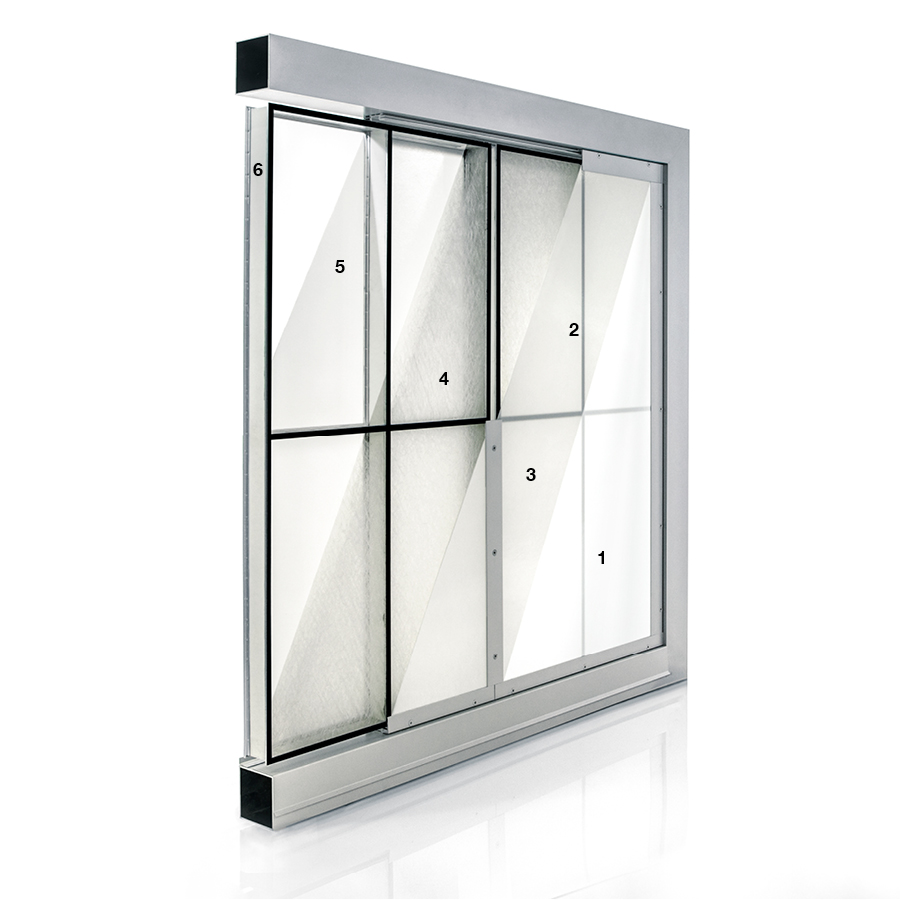
Kalwall utilizes FRP as the face-sheet material for structural sandwich panels. The FRP sheets (3, 5) are bonded to a structural grid core (6) composed of interlocking aluminum and thermally broken I-beams. The bond line (2) between the FRP and the grid core utilizes a proprietary adhesive technology. Translucent insulation options (4) within the panel cavity allow custom thermal performance up to a 0.05 U. The Kalwall panel composition also includes a proprietary weatherable coating (1) that provides self-cleaning properties and UV resistance.
As a composite material with composite construction, Kalwall is uniquely stronger than related products, providing benefits beyond quality daylighting.
The panel is both lightweight and structurally sound, with high load capacity. In addition to great thermal performance values, systems can be configured to meet impact, fire and blast-resistant codes and more.
Daylight with your entire facade—sustainably.
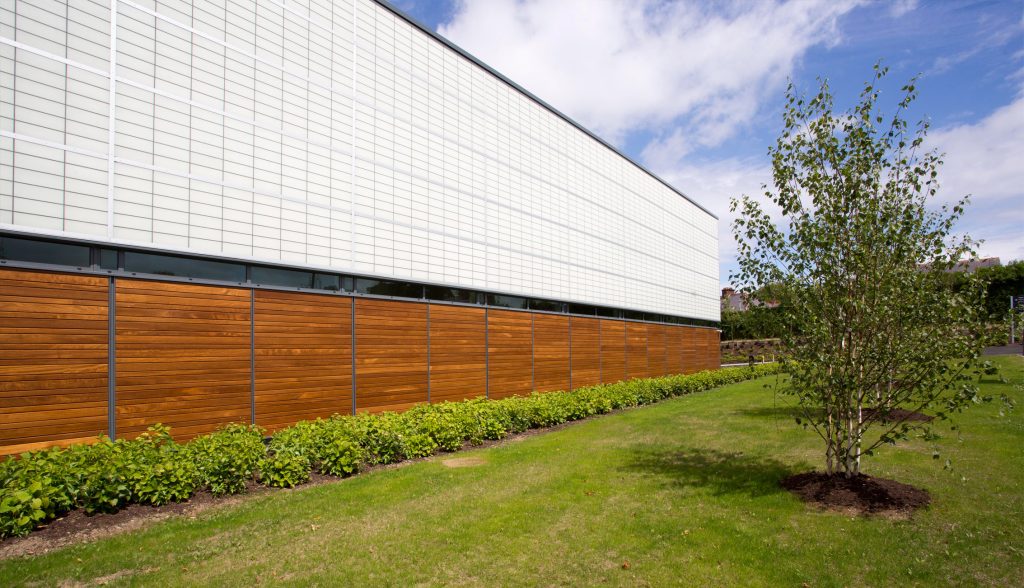
So, what if your entire building was a luminaire? What if you could let in the light and maintain a thermally efficient envelope? A translucent facade is a game-changer.
More and more, the inefficiencies of glass buildings go against the sustainable practices of today’s architecture. Glass offers poor thermal insulation. Even double- or triple-paned glass creates thermal holes in a structure that can have HVAC systems running harder than necessary. That’s not even taking into consideration entire glass skyscrapers, which have such a high carbon footprint that some cities have made recent attempts to ban them. Glass structures also lead to the deaths of up to a billion birds every year, causing major environmental damage. Even from a daylighting standpoint, glass often fails to meet true human-centered design needs due to issues with glare and uncomfortable hot spots.
But when you remove glass as a building material, you’re often left with alternative opaque solutions that don’t daylight at all. Many building trends are returning to a focus on traditional steel and wood materials. However, we know humans need daylight for their health and wellness, which makes translucent materials the ultimate solution for your facade.
Kalwall’s translucent facades offer the best of both daylighting and thermal performance. Balanced, glare-free light during the day—without the need for automated controls—means reduced electrical costs. Insulation values that are nearly as high as a solid wall (R-20) along with solar heat gain coefficients as low as .04 mean reduced HVAC costs. Plus, the translucent material is bird-strike safe. Kalwall has been tested by the Bird-Safe Buildings Alliance and is listed in the American Bird Conservancy’s product and solutions database for glass collisions.
All of this means you can use large areas of translucent wall panels or even design an entire translucent facade while lowering your building’s carbon footprint.
Be creative with unitization.
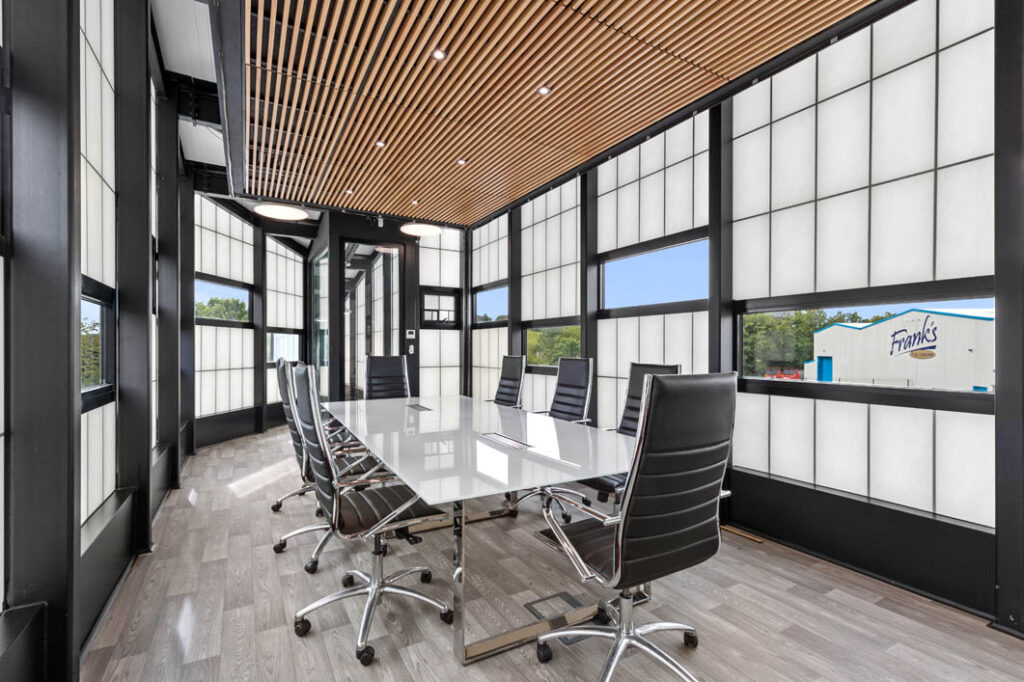
What’s the one thing that’s missing? A view.
While translucent facades offer a step up when privacy is preferred, if your building needs a view outside, you’ll still need to incorporate some transparent windows.
Luckily, Kalwall’s unitized curtain walls allow you to seamlessly incorporate strategic areas of view without significantly compromising your overall daylighting design or building performance. For example, adding a line of windows at eye-level surrounded by translucent panels prevents excessive use of inefficient glass.
There are endless design and unitization options that we encourage you to explore. Download our Facades Brochure to start exploring.

